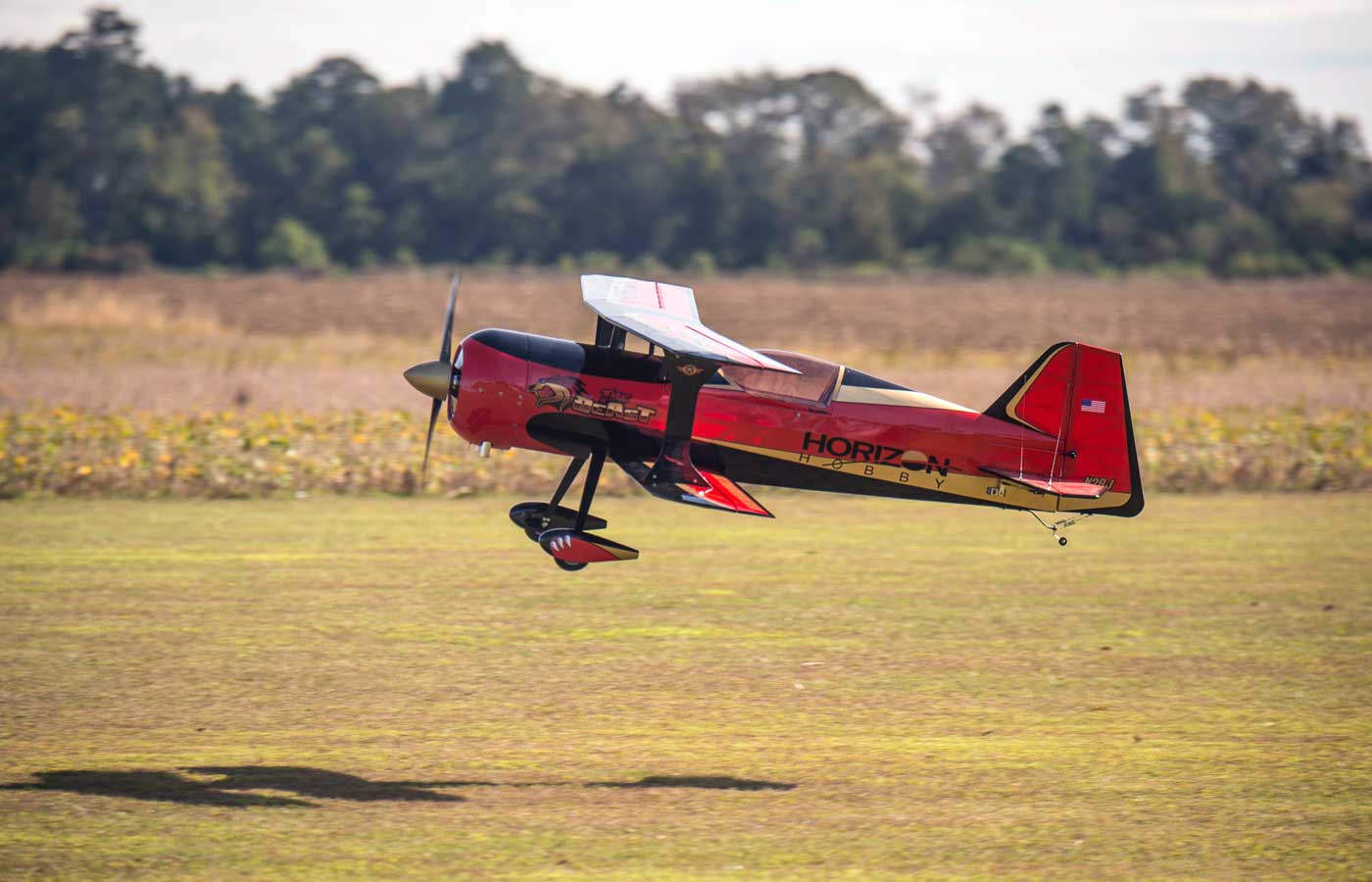Q. I'm building an 86" biplane and powering it with a DA100 engine (and I've got a DA120 calling from a drawer). Instructions call for one servo per control surface, pull-pull linkage on the rudder, plus throttle but otherwise leave it up to me. What servos in your lineup would you recommend?
A. It depends. Depends on what? Depends on how you fly it! Basic aerobatics means one thing, flying it like you stole it means another. We have suitable selections varying between $50 and $100 - which is best depends on how it'll be flown. But figuring out which is best for 'you' requires analyzing your flying style. And since your input is a variable, the answer has to be . . . it depends!
Anyway, in this caseSTUDY we'll help you figure it out. First, what are other pilots flying in this size model? second, honestly assesses your flying style. Note; nobody flying something like this is a beginner, right? But beyond this fact, be brutally honest; if we polled everybody in your club they'd say you're . . .
- a) just one of many club pilots
- b) the best pilot in your club
- c) That guy, the one good enough to fly show-center as a pro
Anyway, while our $100 servo is made for a pro's kind of duty cycle (you know, we're ProModeler), we have solid servo choices for you priced at $50 and $70, also. So the only question is, do you need the very best, or will maybe a less expensive servo do the job? This, based on how you fly.
Bottom line? It all revolves around whether you're a club pilot, a pro, or what - plus what you just want in the way of a servo. Figure that out and picking which of our servos is the right one for this 100cc powered beast is easy! Anyway, keep reading and we'll try to shed light on guiding to your answer.
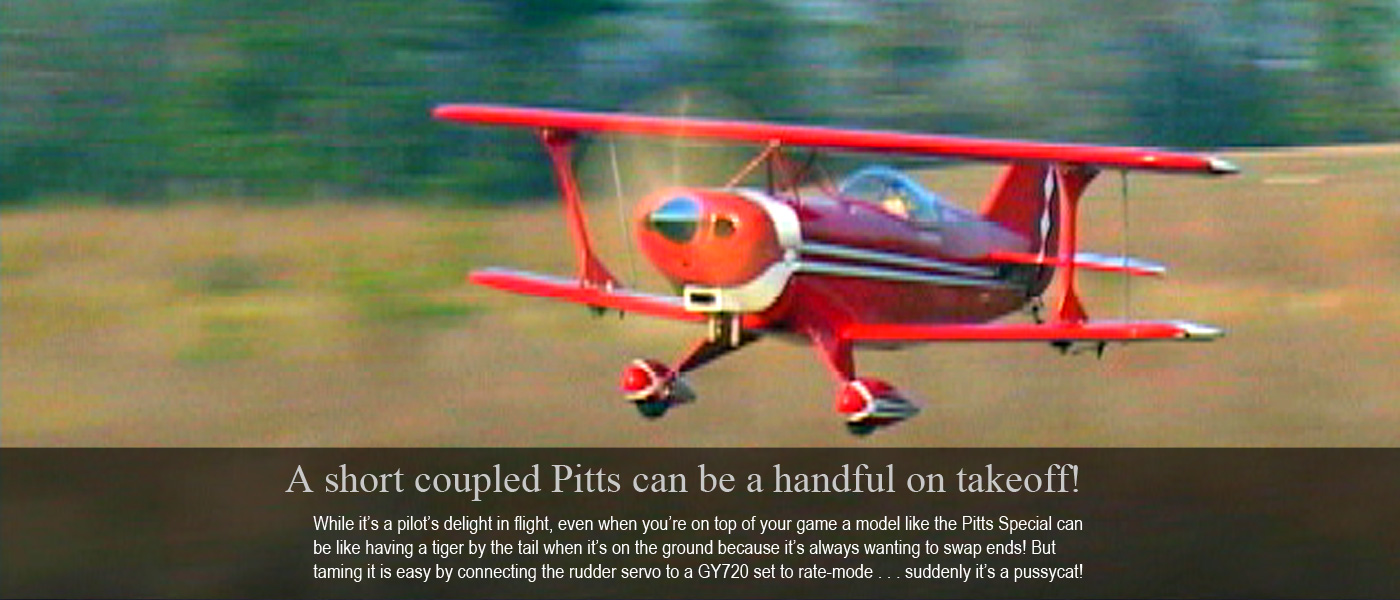
Disclaimer
Will equipping your model with ProModeler servos let you fly like the world's best pilot? Yes, but only in your dreams! Put another way, the tool does not the craftsman make. So no matter which servo you buy, it's not going to let you fly like Jason Dussia - or any of the other top pilot who have paid their dues through the years mastering their skills! Reminds me of one of the best movie lines ever, Clint Eastwood in the role of detective Harry Callahan in Magnum Force goes; a man's got to know his limitation. It's a philosophy I've never forgotten. And it's one most modelers would be wise to bear it in mind when selecting servos. It'll save you money.
Please also note; 'my' basis of experience for sharing my opinion regarding servos includes a lifetime of building and flying RC models (since the early 1970s). You're wondering about the right servos for this model. I'm sharing an opinion, a lifetime's worth of lessons in on how to go about selecting what's right for you, but still just an opinion . . . and one worth every penny you've paid. Remember, opinions are like belly buttons and everybody has one. This is mine!
Definitions worth remembering; RC models vs. drones
RC means remote control and when paired with the word 'models' simply means a line of sight activity. E.g. a bunch of guys flying their model airplanes in a field somewhere. Unlike a drone, a model has a limitation; once it gets more than a few hundred feet away it's becomes too small see and it crashes. Thus, unlike pilots flying drones, modelers keep their models reasonably close so they can see it - and - have control. Line of sight! Also, what's the fun in flying a model so far away you can't see it?
To hammer home the obvious; because they crash after they fly out of your sight, models pose no conceivable danger - we're talking mere hundreds of feet. However, drones can fly for miles while the operator wears goggles to see where it's going. This is 'the' big difference between models and drones. One you fly with just your eyes, and the other requires goggles or computer control. Two totally different things!
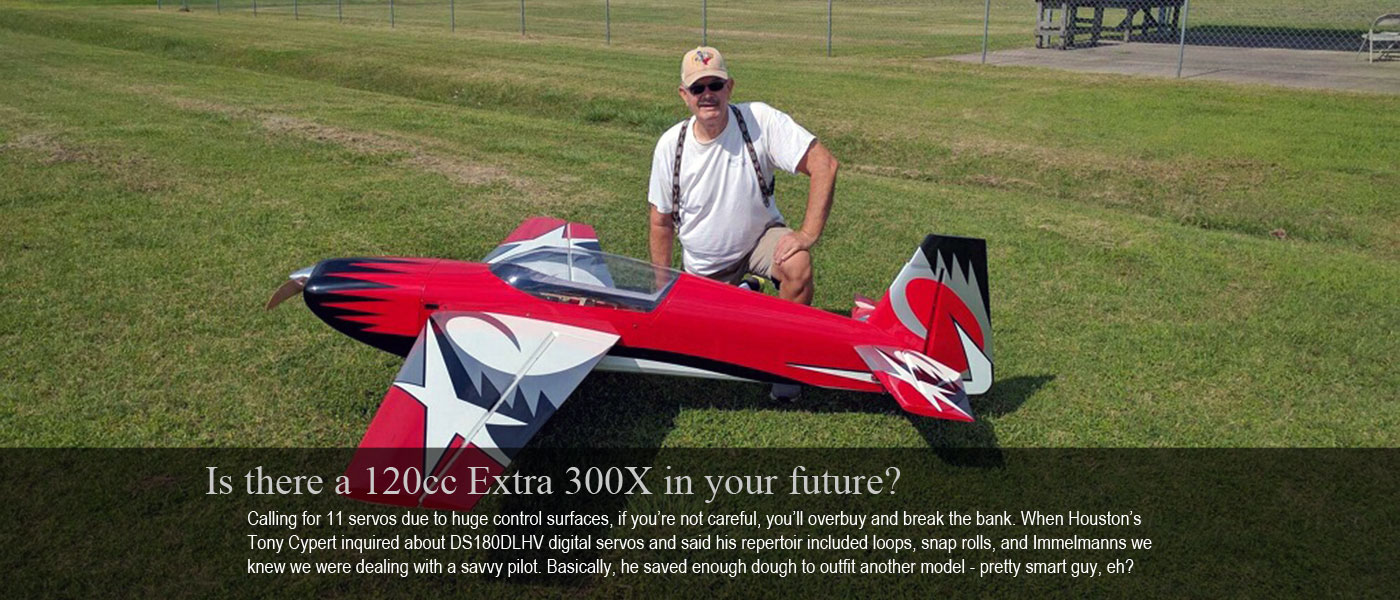
Next point; the manufacturer selling a model has no clue if the customer ponying up the shekels is a sport pilot like me, or the reigning world champion. So he can be forgiven for covering his ass and making no servo recommendation whatsoever. Honestly, it's the smart thing for him to do. Another thing they often do is recommend servos for the world champ and leave the guy who doesn't know basically spending too much money for servos with performance differences he cannot possibly discern as better or worse. In essence, 'you' pay the price for his covering his you know what.
As a point of consideration, it's my experience lots of biplanes of this size are equipped with our DS470BLHV servos (usually everywhere except rudder where the pilot often opts for a DS630BLHV). That gets you into the mid $700s, but it can be done for less. Interested? Keep reading.
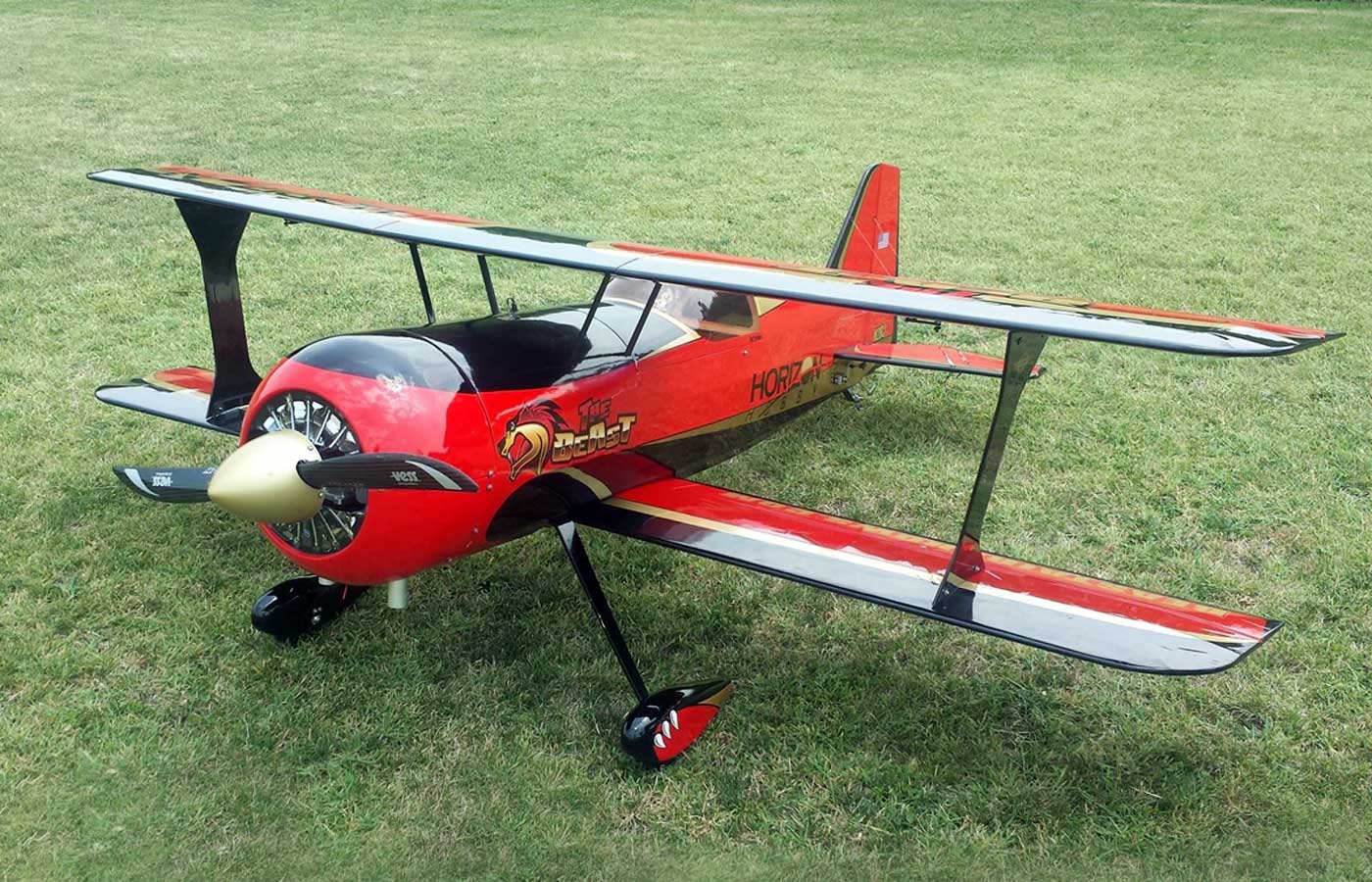
How to save money on servos for a 100cc model
For help in figuring out which is the right servo we'll turn to some examples and hope it helps us find your place in the order of things. This is important because for a lot of pilots, the only thing they'll feel when flying top of the line servos is a lighter wallet. One trick for saving serious money when it comes to selecting servos is to avoid playing to the peanut gallery. Only pay for what you can feel in flight and not one nickel more.
Selecting servos for your model
To begin, for a 25lb aerobatic model powered by a 100 to 120cc engine, most guys would agree 470-500oz-in works nicely. But let me tell you something, 300oz-in per surface for the model is also plenty. I know because I was in attendance at the TOC in 2004 (Tournament of Champions as hosted by Bill Bennett of Circus Circus fame in Las Vegas). Chip Hyde won the event flying a Double Vision biplane weighing 44 pounds with a 200cc engine. He won using servos that made 190oz-in on 6V.
I mention this because you should try really hard to keep perspective (unless your money grows on trees). Also, please note, we're speaking about an acrobatic model. If the discussion were about a 35 pound WWII fighter performing the usual repertoire of WWII fighter-type maneuvers like wing overs, barrel rolls, loops, and high speed passes then you'd be fine with a less powerful servo because those maneuvers develop slowly, and with precise control inputs rather than abrupt controls inputs, which places entirely different requirements upon a servo. If you're gonna fly the big bipe like granny, then you don't need as much money for super powerful servos. Fact.
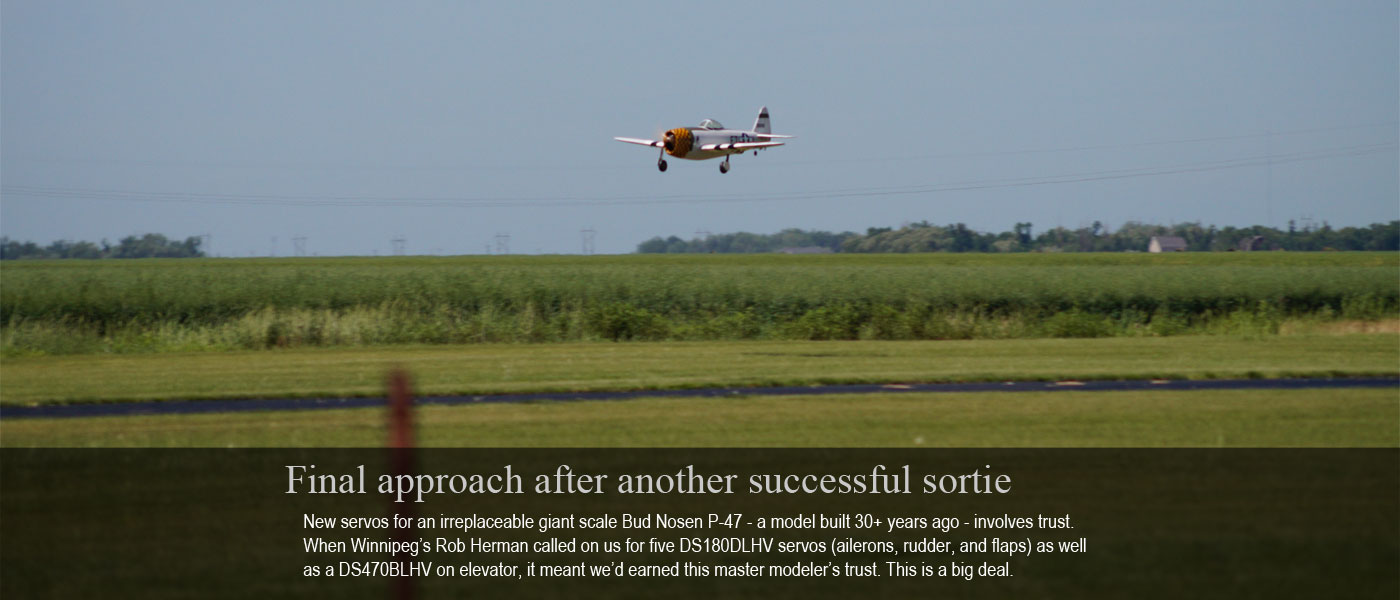
Anyway, we know DS470BLHV servos will do the job. Will something less expensive do the job? In fact we offer three servos in the 300-ounce range that would do quite nicely. And one of these is sure to be the 'right one' for you also. But remember; it depends 100% on you more than anything, e.g. how you intend to fly it.
Internally we refer to these three choices as good, better, and best 'but' in reality all three are good servos. Which one I'd use is a matter of duty cycle and when paired with the appropriate duty cycle I'd happily use any of the three and not lose a wink of sleep! In increasing order of price these are:
- $50 - DS360DLHV
- $70 - DS305CLHV
- $100 - DS345BLHV
Does this mean you shouldn't use less than 300oz-in, like perhaps the $45 DS270DLHV, or even more powerful servos like the $140 DS630BLHV? Nope!
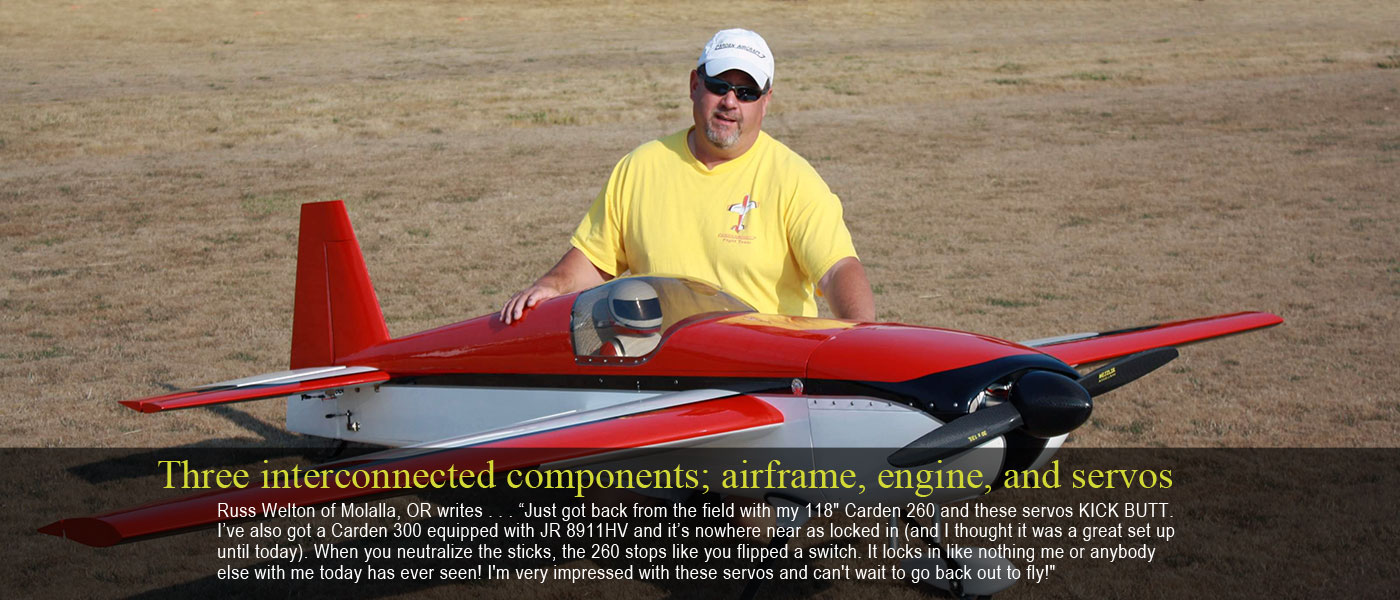
Breaking down the product numbers
By the way, let's break down what our product numbers mean because it'll help you get your head around navigating our few dozen servo offerings.
- DS = digital servo
- 305 = 305 ounce-inches of torque
- CL = is for motor-type (3-pole, coreless, and brushless - DL, CL, and BL)
- HV = high voltage (from 4.8 to 8.4V)
Anyway, now that you're equipped with this information, deciphering for example, what DS305CLHV means is easy because it's a digital servo making 305 oz-in of torque, which has a coreless motor and operates on high voltage. There's more involved but selecting the specs tab for any of our servos will offer up more details than many know exist!
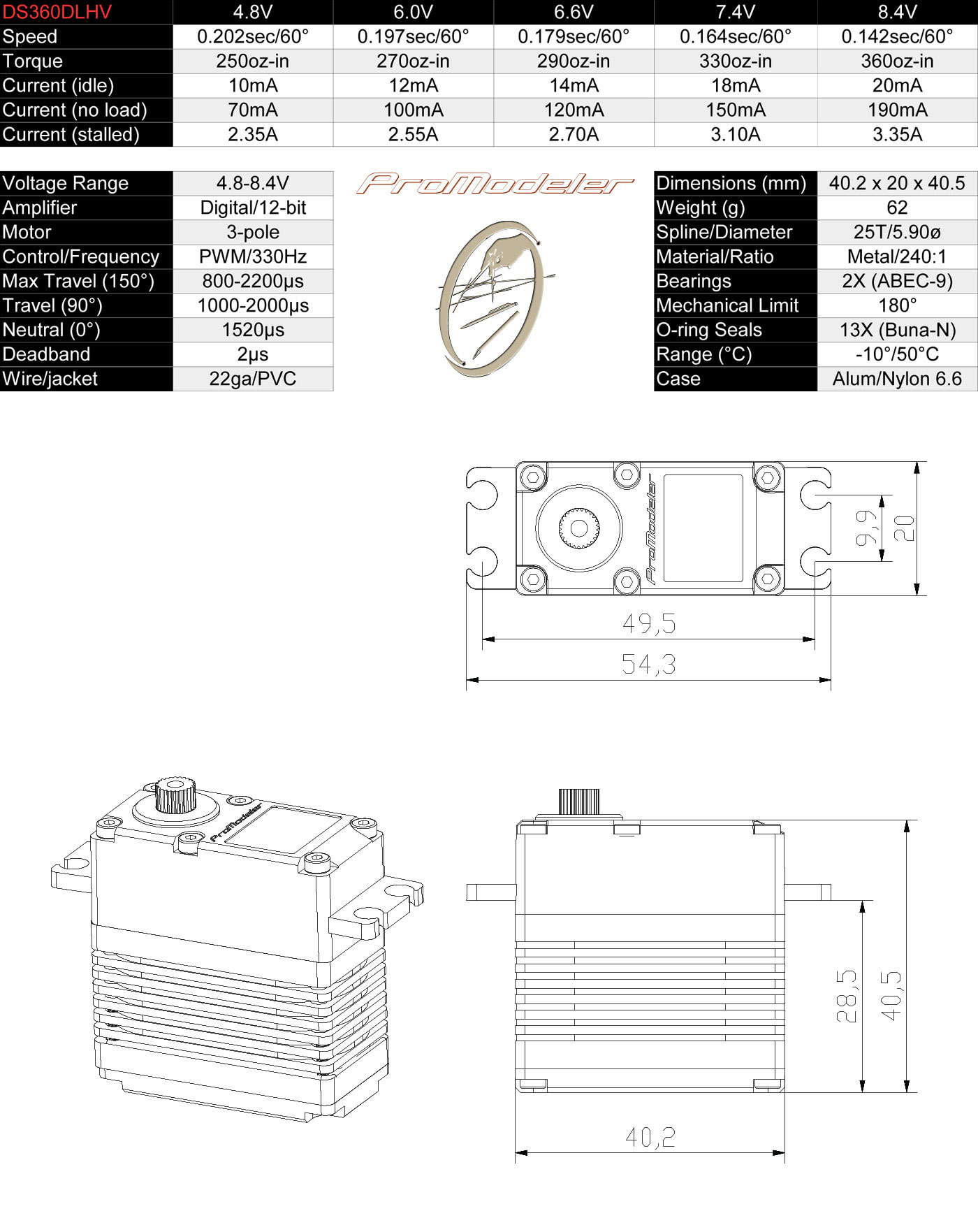
Scenarios - club pilot, best pilot in the club, pro, and rich
So let's walk through a few scenarios. I'm a club pilot. Loops, rolls, inverted flight, some stall turns, the occasional outside snap roll, a few knife edge passes, which I try really hard not to screw up but usually do are the repertoire of maneuvers in my bag of tricks. Honestly I'd be perfectly happy using DS360DLHV servos all around (plus maybe a DS470BLHV on rudder). Also, I'd use a 2500mAH LiFePO4 battery and two switches - and - I'd check the pack after every third flight, or so, and top it off with my field charger. That's $350 worth of servos.
If I were the club's best pilot I'd probably wants faster servos. While 'I' can't tell the difference, those guys whom are generally acknowledged to be the best in the club can appreciate a faster servo. Bottom line? If you can genuinely feel the difference, then the DS305CLHV is probably a better choice because it's considerably faster than the DS360DLHV. So that's $70 each versus $50 each so figure about $490 worth of servos.
To recap; a faster servo matters to the club's best pilot. How do you know he's the best pilot, or one of the best pilots? In my club it's guys who can perform harrier rolls, plus maybe torque rolls. Overall he's just a better pilot than me. For this pilot, the difference in spending $350 vs. $490 is worthwhile.
Note; instead of a 2500 mAh LiFePO4 battery, which is what I'd use because it's convenient (since I don't have to remove it from my model for charging), this guy opts for the 2S2200 LiPo instead. Why? Simple, because a LiPo pack outputs 1V more than LifePO4 chemistry (7.4V vs 6.4V)' and' this extra volt means a little better performance at the servos, e.g. both torque-wise and speed. Note; this holds true for any and every brand of servos . . . more voltage equals more performance (until you give them too much voltage and let the magic smoke out, but I digress). Oh, and once again, two switches for redundancy.
The third example is the guy who is God's gift to flying - the real deal. For this guy the right servo is without question one one of our brushless servos, probably for this model the DS345BLHV instead of the DS470BLHV just because it's a faster servo with sufficient torque (most 3D pilots prize speed over torque).
The right battery pack is again without question a LiPo (and with respect to selecting pack chemistry, you might want to brush up on the subject with this article). Anyway, this pilot does Harriers on the deck, torque rolls are effortless for him, and in general he's the best pilot in your neck of the woods. Maybe he's not a sponsored pilot but he could be if he wanted to turn pro and fly the circuit (e.g. attending 20-30 fun flies and events each year, maybe more . . . a job instead of flying for fun).
Also, and this is a very important consideration for a pilot flying 300-500 flights per year, this guy needs servos that will really hold up. His servos must deliver the required duty cycle. This pilot demands brushless motors because they last 5X longer than coreless. Also, an all-aluminum case, etc. Price is no object so he's gonna spend $700 (or more) for his servos because otherwise he's buying servos every year or two.
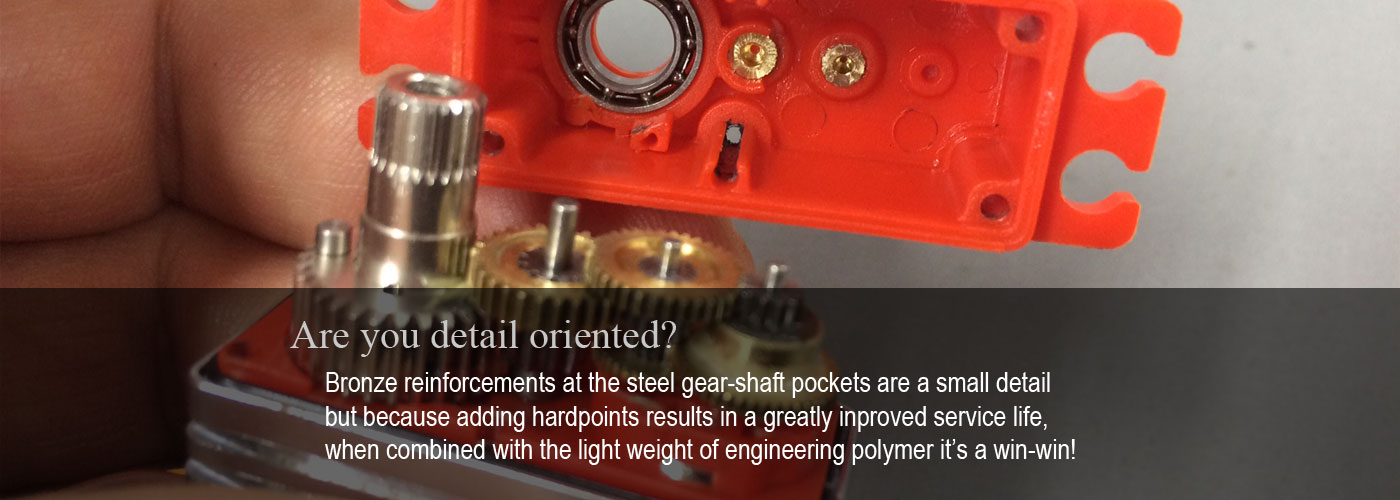
Interjection - a word regarding construction
The construction of the DS360DLHV and the DS305CLHV is very similar. E.g. other than the motor-type, both have lightweight polymer case components, which are reinforced with SAE65 bronze bushings. Both share an aluminum center section with cooling fins CNC-machined into them to extend motor life (the enemy of all electronics is heat). Both have the same type metal gears (100% metal gears, no plastic) plus both have the very best in the way of potentiometer and bearings (same as in our brushless servos). Add to it they both share 13 o-rings to exclude the bad stuff from the inside of the servo, and a conformal coating on the printed circuit board to help protect against shock and vibration.
What I'm trying to say is this; the guy selecting the 360DL vs. the 305CL isn't make a choice in quality, he's 'only' making a choice regarding performance because honestly, the difference in torque between 360 and 305 just isn't something most pilots can discern in the air. The difference in speed, however, 'is' a big deal for some pilots.
The brushless series of servos are different. These are better than the composite case servos due to having a more rigid all-aluminum case. The gear mesh stays constant longer. They also sport more robust steel gearing (nothing is stronger than steel, not aluminum, brass, or titanium). Basically, while marketing types love to tout titanium gears because nothing makes a rube reach for his wallet faster, if titanium were better for gears, then money-is-no-object-cars like Ferrari would have them. But they use steel for their gears just like we do.
Also, even though the cases are made of aluminum, our top-of-the-range brushless servos still have bronze inserts (serving as reinforcements, or hard point). The idea is, the BL series are the very best servos we know how to make (and we price them accordingly).
Continuing; there's a 4th case study; the guy building the ultimate model. For him, there's nothing but the best. This guy buys into the whole "I gotta have a gyro because the airplane won't fly without out it" mentality even though 15 years ago pilots flew these same models without a $500 gyro package. They also buy into the idea of flying with two batteries because (sorry, I really don't have a sound argument for why carrying two batteries - basically the most reliable component in the avionics - makes good sense but plenty of people disagree with me).
Anyway, the best of everything extends to servos like our top of the range DS345BLHV (and we offer more more powerful versions like the DS470BLHV and the DS630BLHV). However, it's my opinion the only guy who 'needs' the high duty cycle servos like the DS345BLHV, and up, is also flying two critically more difficult maneuvers; the wall, and reversing rifle rolls.
If you're doing these two maneuvers, and I don't mean you try one occasionally but honestly this is what you do with your model at your field all the time, then you don't have a choice. You should select our best servo, the one with steel gears and an all-aluminum case, because it's the best servo in the world. Pick the DS345BLHV, DS470BLHV, or DS630BLHV.
Quite simply, the best servo for you is down to the duty cycle you envision. It's one where the servo just won't survive indefinitely unless it's made of aluminum and has a motor that stays cooler because those maneuvers are HARD on a servo.

Conclusion
Which servo is right for your model depends on how you fly. Are you a club pilot? Are you your area's best pilot? Are you gifted by God with hand-eye coordination the others merely dream of? Or is your wallet simply capable of handling the best, or nothing, and that's what you want because you'd rather have some fun instead of your daughter a Porsche after you pass? Anyway, these are our choices . . .
Anyway, these are the principle factors you should consider when placing your order for ProModeler servos (or any brand if you can find one better built than ours). Still confused? We stand ready to help you figure out the right servo for your application . . . just call 407-302-3361 and ask for me, John.
